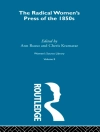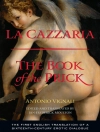The Lays or Laisof Marie de France were a series of twelve short narrative Breton lais by the poet Marie de France. They were written in Anglo-Norman and were probably composed in the late 12th century. The short, narrative poems generally focus on glorifying the concept of courtly love by the adventures of their main characters. But in translation their poetic quality has been superseded by the narrative content and it is in this form that the work is available to us today. Contents:
The Lay of Gugemar
The Lay of the Dolorous Knight
The Lay of Eliduc
The Lay of the Nightingale
The Lay of Sir Launfal
The Lay of the Two Lovers
The Lay of the Were-Wolf
The Lay of the Ash Tree
The Lay of the Honeysuckle
The Lay of Equitan
The Lay of Milon
The Lay of Yonec
The Lay of the Thorn
The Lay of Graelent
A Story of Beyond the Sea
The Chatelaine of Vergi
p The Lays or Laisof Marie de France were a series of twelve short narrative Breton lais by the poet Marie de France. They were written in Anglo-Norman and were probably composed in the late 12th century. The short, narrative poems generally focus on glorifying the concept of courtly love by the adventures of their main characters. But in translation their poetic quality has been superseded by the narrative content and it is in this form that the work is available to us today. Contents:
The Lay of Gugemar
The Lay of the Dolorous Knight
The Lay of Eliduc
The Lay of the Nightingale
The Lay of Sir Launfal
The Lay of the Two Lovers
The Lay of the Were-Wolf
The Lay of the Ash Tree
The Lay of the Honeysuckle
The Lay of Equitan
The Lay of Milon
The Lay of Yonec
The Lay of the Thorn
The Lay of Graelent
A Story of Beyond the Sea
The Chatelaine of Vergi
About the author
Marie de France (1160-1215) was a poet, possibly born in what is now France, who lived in England during the late 12th century. She lived and wrote at an unknown court, but she and her work were almost certainly known at the royal court of King Henry II of England. Virtually nothing is known of her life; both her given name and its geographical specification come from her manuscripts. However, one written description of her work and popularity from her own era still exists. She is considered by scholars to be the first woman known to write francophone verse.












